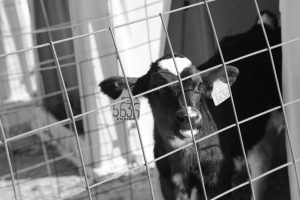The Canadian Veal Association (CVA) and the National Farm Animal Care Council (NFACC) are pleased to announce the release of the revised Code of Practice for the Care and Handling of Veal Cattle.
 Canada’s Codes of Practice are nationally developed guidelines for the care and handling of farm animals. They serve as the foundation for ensuring that farm animals are cared for using sound management and welfare practices that promote animal health and well-being. Codes are used as educational tools, reference materials for regulations, and the foundation for industry animal care assessment programs.
Canada’s Codes of Practice are nationally developed guidelines for the care and handling of farm animals. They serve as the foundation for ensuring that farm animals are cared for using sound management and welfare practices that promote animal health and well-being. Codes are used as educational tools, reference materials for regulations, and the foundation for industry animal care assessment programs.
“The Canadian Veal Association is pleased to have an updated and revised Code that will support the sustainability of the Canadian veal cattle industry and the success of our producers,” states Bob Wynands, veal producer, President of CVA, and Chair of the Code Development Committee. “Our industry’s participation and leadership in the Code development process demonstrates our producers continued commitment to animal health and welfare, and dedication to responsible animal husbandry.”
Wynands added that “this Code also represents a true collaboration of industry partners and stakeholders where all voices and opinions were shared at the Development Committee in order to develop a Code that truly has the support of all involved. I am very proud of the Code that has been the result of the hard work, dedication and focused efforts of all committee members.”
NFACC’s Code development process is a uniquely consensus-based, multi-stakeholder approach that ensures credibility and transparency through scientific rigour, stakeholder collaboration, and consistency. Updates to the Veal Cattle Code were led by a 17-person Code committee comprised of veal producers, animal welfare and enforcement representatives, researchers, veterinarians and government representatives. Aiding in their work was a four-person Scientific Committee that included research and veterinary expertise in veal cattle behaviour, health and welfare. A public comment period was held in the winter of 2016 to allow the public and all stakeholders to provide input.
Canada’s Codes of Practice are a powerful tool for meeting rising consumer, marketplace and societal expectations relative to farm animal welfare. Codes support responsible animal care practices and keep everyone involved in farm animal care and handling on the same page.
“The new Code provides updated standards for the welfare of veal calves in Canada,” said Dr. Jeffrey Rushen, who represents the Canadian Federation of Humane Societies on the Code Committee. “The recommendations are science-informed and will evolve the welfare practices of the veal industry to better meet the needs of the animals.”
Changes that are being brought forward are :
HOUSING REQUIREMENTS:
- For new or renovated structures: As of July 1, 2018, calves in newly built or renovated housing must be switched to group housing at as young an age as possible and no later than 8 weeks of age. Tethering is prohibited.
- For existing structures: As of December 31, 2020, calves in existing structures must be switched to group housing at as young an age as possible and no later than 8 weeks of age. Tethering is prohibited.
- Individual housing used in the first 8 weeks of life must allow calves to stand up, lie down in multiple positions, turn completely without assistance, groom, stand fully upright without touching the top of the enclosure and have physical or visual contact with other calves.
REQUIREMENTS FOR PAIN CONTROL AND PAINFUL PROCEDURES:
- The tails of the calves must no longer be docked unless deemed medically necessary by a vet, and all tail docking must be performed by a vet.
- Pain control must be used, during and after tail docking, castration, disbudding and dehorning procedures.
- A requirement that castration, disbudding and dehorning be performed at as early an age as possible to minimize pain and complications.
MALNUTRITION AND HUNGER REQUIREMENTS:
- Calves must have access to a quality and quantity of food to fulfill their nutritional needs, maintain health and vigor and prevent hunger.
- Producers in milk-fed veal systems must create a vet-approved written protocol for anemia prevention that includes monitoring of hemoglobin levels.
- Calves who are below a specific blood hemoglobin level must receive iron supplements.
- Calves must be fed milk or milk replacer at least twice a day except during weaning.
- Feed must be provided in a way that prevents competition for feed and potential injury due to competition for feed.
- There are now requirements about when and how weaning is carried out. Weaning cannot be started until calves are at least 4 weeks of age and cannot be completed until they are at least 6 weeks of age. Weaning must be carried out gradually, and calves must be monitored and promptly assisted if they are not coping well with the transition.
Source: National Farm Animal Care Council




